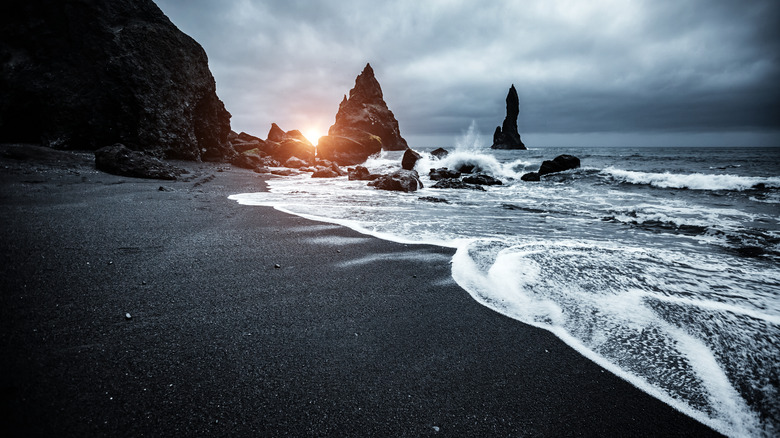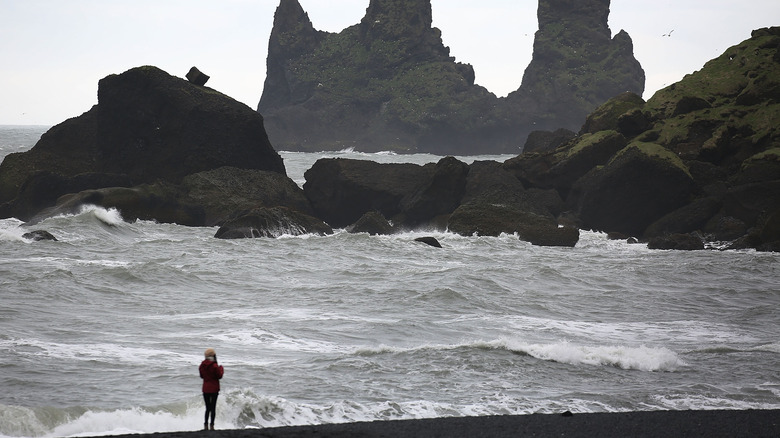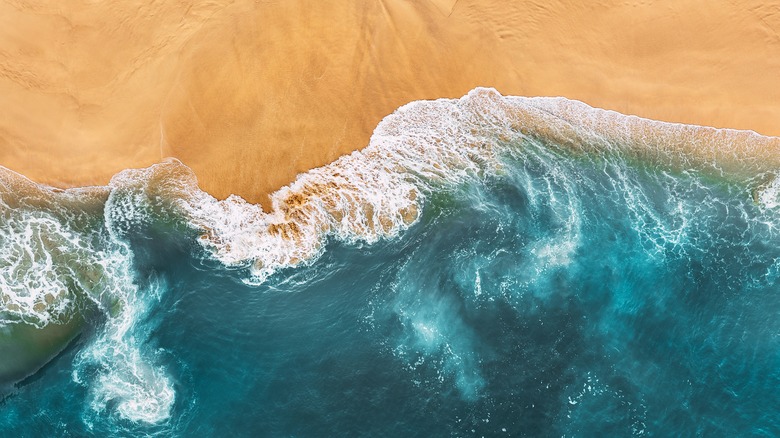Why Is This Black-Sand Beach In Iceland So Dangerous?
Iceland is home to some of the most breathtaking sights on the planet. The volcanically active country was first settled by Celtic and Norse Vikings over a thousand years ago. As Britannica says, its geography is both beautiful and hostile. A splendor of jagged mountains, hot geysers, fjords, and ice fields carved into the landscape itself, Iceland is very inviting to the would-be tourist. As reported by the Icelandic Tourist Board Ferðamálastofa, the country saw 700,000 visitors in 2021, making it a hot destination for many.
One would be remiss to not mention one of the most beloved attractions of Iceland: Reynisfjara beach. Reynisfjara is Iceland's most visited beach, and among the most beautiful in the whole world. The obsidian black sands that the foamy blue-green waves lap onto is a huge tourist draw, and a sight for the eyes above all else. However, these beautiful beaches hide something sinister: sneaker waves. As Euronews reports, sneaker waves are deadly, having taken a few lives on the Icelandic beach, which has prompted officials to ramp up safety and awareness.
Why Iceland has black-sand beaches
Beaches are places of intrigue and sometimes mystery. It is perhaps that mystery and intrigue that makes them such desirable places to visit. Reynisfjara beach is no different, and the reason behind its black sand is actually a fascinating and scientific story.
As the National Oceanic and Atmospheric Administration explains, sand is ubiquitous, existing in many places. It is mainly created from deteriorated rocks, which have broken down from erosion and weathering elements. This process is very long, taking thousands, sometimes millions, of years. Sand becomes beaches and the ocean floor from eroding rocks that make their way there from sources like rivers carrying them to the sea. Waves also have a big part in accelerating the erosion process.
Of course, the difference between regular sand and Reynisfjara sand is the striking black color. As The Travel explains, this hue is actually caused from volcanic activity. Lava from an erupting volcano cooled and hardened in the Atlantic Ocean, creating deep black colors. This hardened lava was eroded by the ocean's currents and waves, giving it its unique texture and look.
Why Reynisfjara is so dangerous
Despite the extraordinary beauty of Reynisfjara's beaches, they can also be quite dangerous. Recently Icelandic officials have tried to draw more attention to the threat of sneaker waves. As Euro News reports, sneaker waves are basically when a couple of smaller waves join together into one giant wave. This can happen in various ways, like ocean currents forcing waves together. However, in Reynisfjara's case, these sneaker waves come from an offshore underground cliff.
Sneaker waves are not to be messed with. They can very easily drag out and drown a fully grown adult if one is not careful. That, combined with often freezing temperatures, can really do a number on any would-be swimmer. Five people have died over seven years at the beach, with the most recent death being in June (via Iceland Review). As Euro News says, officials are setting up color-coded warning systems and other various signs to help educate people. Guides can also vigilantly watch guests and make sure that they stay safe, all in hopes that Reynisfjara will stay safe for visitors in the coming days.


